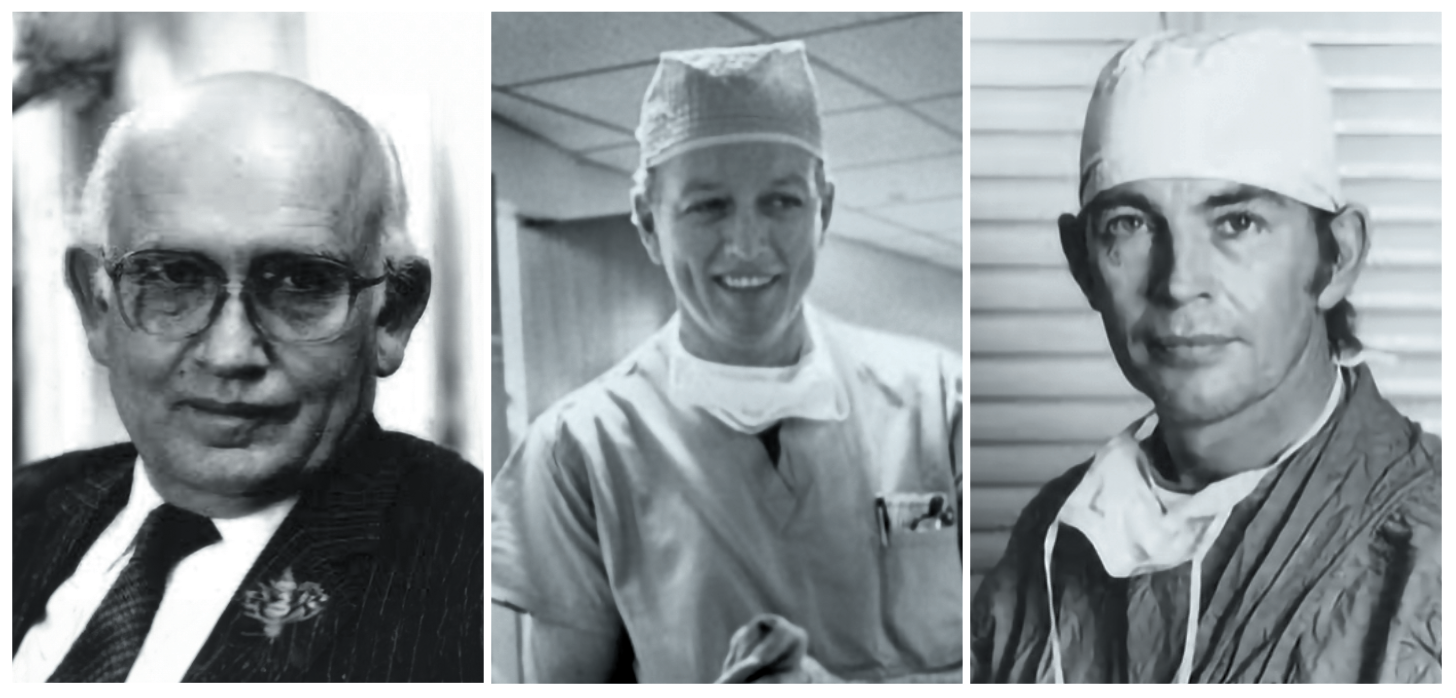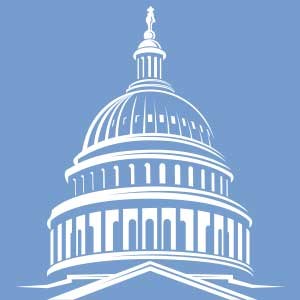Surgeons are experienced, take-charge problem solvers who are dedicated to improving the lives of the patients they serve. Leaders of the American College of Surgeons (ACS), such as members of the Board of Regents, Board of Governors, Advisory Councils, and various committees, achieve their stature within the organization by consistently identifying health care issues that they believe require the surgeon’s perspective, collaborating with other experts on an issue, achieving consensus, developing a strategic plan, operationalizing the plan, and continuing to work with relevant committees and leadership to sustain the program.
A prime example of how one ACS Regent was able to use his leadership skills to address a shortcoming in trauma care is the development and growth of a worldwide movement to bring bleeding control training to laypeople known as STOP THE BLEED®. This lifesaving campaign to provide immediate care to severely injured individuals was initiated by Lenworth M. Jacobs, Jr., MD, MPH, FACS, who rotated off the Board of Regents in October 2020 after nine years of service.
The trigger

On December 14, 2012, a disturbed young man with an AR-15 semi-automatic rifle and two handguns entered Sandy Hook Elementary School, Newtown, CT. In a matter of terrifying moments, he killed 20 first graders and six teachers and school administrators before turning a gun on himself.
At the time, Dr. Jacobs was an hour away at Hartford Hospital, CT, where he served as director, trauma and emergency medicine. He prepared to send medevac helicopters to Newtown but was advised to stand down. “You hear, ‘Everybody’s dead’—and that makes no sense,” he said in an article in The New Yorker. “Then you hear, ‘It’s children’—and that makes no sense.”1
Dr. Jacobs wondered whether the number of casualties was related to the local emergency response, the nature of the gunshot injuries, or both. He reviewed the autopsy reports and was horrified. Although he concluded that the Sandy Hook victims likely instantly died and that even with immediate care their deaths would have been unpreventable, he became emboldened to develop a plan to prevent other victims of mass casualty incidents leading to death from extreme blood loss.
At the February 2013 meeting of the ACS Board of Regents, Dr. Jacobs urged his colleagues to support and lead an effort to mitigate these losses. The board approved his plan to convene a Joint Committee to Create a National Policy to Enhance Survivability from Intentional Mass Casualty and Active Shooter Events. This group of physicians; emergency medical services (EMS) personnel; military leaders; and law enforcement officials, including representatives of the Federal Bureau of Investigations and the Department of Homeland Security, met April 2, 2013, at Hartford Hospital, CT.
Using data and evidence from existing military and recent civilian experiences and being sensitive to the multiple agencies that play a role in responding to mass casualty shootings, the conferees identified early control of hemorrhage as critical to improving survival from these incidents.2 The committee’s position was articulated in what is now known as the Hartford Consensus I.

A few weeks later, the unthinkable occurred again. Two young men planted homemade bombs along the path before the last stretch of the Boston Marathon. Shrapnel from the explosives and shards of glass from the shattered windows of the surrounding buildings shot up and rained down on bystanders and runners, mostly resulting in extremity wounds, head injuries, and hearing loss. In light of this event, the committee’s consensus statement was expanded to focus on improving survival, not just from active shooter events, but all intentional mass casualty situations. In early 2016, the Hartford Consensus was expanded to include all causes of bleeding, including unintentional, everyday incidents such as car crashes and farming accidents.3,4
The committee met four times, and its recommendations are collectively known as the Hartford Consensus I–IV. The chief tenet of the Hartford Consensus is that no one, under any circumstances, should die from uncontrolled bleeding.5
STOP THE BLEED® launches
“Most people die from severe bleeding within the first five minutes of the injury. So, it is really important that someone step in as soon as possible to stop the bleeding,” Dr. Jacobs said. Hence, he and his collaborators worked tirelessly to create a three-step process that all people—first responders, students, families and friends, and concerned bystanders—could use to provide immediate, on-site care to prevent death from hemorrhaging.
This process became known as STOP THE BLEED® in October 2015, when President Barack Obama and Vice-President Joe Biden issued policy directives stating the need to be prepared to help victims of intentional and accidental causes of severe bleeding.6 The goal of the STOP THE BLEED® program—a partnership between the ACS and the National Security Council—is to promote national resilience by empowering the general public to acquire the skills and confidence to control bleeding in all emergency situations. The three-step process that individuals learn in STOP THE BLEED® training is similar to what military troops learn before deployment—Tactical Combat Casualty Care (TCCC). TCCC was created by the U.S. Department of Defense Committee on TCCC to teach evidence-based, life-saving techniques and strategies for providing the best trauma care on the battlefield.7
An hour-long B-Con (bleeding control) Basic course was developed to train the public in the three ways to stop bleeding. These techniques include using one’s hands to apply pressure, using hemostatic dressings and other materials such as clothing to pack a wound, and applying a tourniquet to control severe bleeding from an extremity.
“It is very important that people know that key to saving the life of someone who is bleeding heavily is to use your hands to apply as much pressure as possible to the wound, and this is something most people can do,” Dr. Jacobs said.
The ACS Committee on Trauma (ACS COT) and the National Association of Emergency Medical Technicians collaborated to develop a B-Con course suitable for individuals without medical training.8 The course was developed under the leadership of Peter Pons, MD, FACS, and the late Norman E. McSwain, Jr., MD, FACS. B-Con is a two- to three-hour course, specifically designed to teach people how to save a life before professional rescuers arrive on the scene.

To meet the anticipated demand, the ACS COT began requiring its verified trauma centers to offer bleeding control courses to the public. As a first step toward achieving this goal, the College offered a course at Clinical Congress 2016 in Washington, DC, to teach surgeons how to educate the public to apply the principles of bleeding control. More than 300 surgeons were trained as instructors during the conference. In addition, the Eastern Association for the Surgery of Trauma provided similar education at its Scientific Assembly in January 2017. Another goal of STOP THE BLEED® is to place bleeding control kits in all public places, including schools, community centers, houses of worship, and stadiums.
Many members of the ACS have heeded the call. In a June 2017 Bulletin article, Jacob Moalem, MD, FACS, then Chair of the ACS Young Fellows Association’s Executive Committee, and associate professor of surgery and endocrinology, University of Rochester Medical Center, NY, wrote about the profound effect of hearing Dr. Jacobs speak about the fledgling STOP THE BLEED® campaign at Clinical Congress 2016. “The beauty of the program was immediately apparent. It is simple, concise, easily teachable, and has great potential to save lives that might otherwise be lost,” Dr. Moalem wrote.8
At a time of growing anti-Semitic attacks throughout the nation, Dr. Moalem said he decided to bring the curriculum to Rochester and install bleeding control kits in strategic locations throughout the city’s Jewish Community Center and the Community Day School that his three children attended. “My mission became clear—I needed to teach this curriculum to the entire staff of each of these organizations and to install hemorrhage control kits in strategic locations throughout these facilities,” he wrote. “Implementing the STOP THE BLEED® program is proving to be one of the most satisfying and gratifying endeavors of my career.”8
In addition, medical students from several U.S. schools published a letter to the editor in the Bulletin asserting that bleeding control training should be a mandatory part of the medical school curriculum. The letter writers united to assist other medical schools to incorporate bleeding control classes into their curriculum.9 This curriculum is now in place at Quinnipiac University, Hamden, CT.
Taking the message to the public
Support for the public to act as immediate responders was documented in a national poll of a representative sample of the general public in the U.S.10 In all, 92 percent of the respondents to the Hartford Consensus survey said they would be very likely or somewhat likely to try to stop bleeding in someone they did not know. When asked if they would assist in a mass shooting event, 94 percent of respondents said they would try to stop bleeding if it seemed safe to do so. Interest in learning bleeding control techniques was substantial, with 82 percent of respondents indicating they would be interested in attending a local two-hour class on bleeding control and other first-aid techniques. The survey results indicated that the public is willing to help bleeding individuals and is keen on learning how to do so.10
In all, 92 percent of the respondents to the Hartford Consensus survey said they would be very likely or somewhat likely to try to stop bleeding in someone they did not know.
Based on the results of the survey, the ACS and other contributors to the Hartford Consensus determined that the time was ripe to train the public to be immediate responders at mass casualty events.
One of the more exciting public awareness initiatives was spearheaded by a partner organization, Johnson & Johnson, which engaged the awarding-winning advertising agency of BBDO Worldwide to develop a campaign to raise public awareness about how anyone can help to save lives by learning the basics of bleeding control. The campaign included creative posters, website banners, and T-shirts that convey this message.
In addition, on October 10, 2016, the cast of the CBS prime-time show Code Black gave a boost to our efforts with its CBS Cares Stop the Bleed promotion. The public service announcement (PSA), which aired that evening after Code Black, featured actors Rob Lowe and Marcia Gay Harden and was viewed by millions of viewers on CBS affiliates throughout the U.S. Besides making a compelling case for having bleeding control kits on hand, the PSA prominently featured the bleedingcontrol.org web address.
Within the first year of offering STOP THE BLEED® training courses to the public, the program, under the direction of the ACS COT, had 16,000 registered instructors and had trained approximately 150,000 U.S. citizens.10 At press time, more than 1.6 million people around the globe had been trained in bleeding control, according to Dr. Jacobs, Medical Director, STOP THE BLEED®, ACS Trauma Programs, adding that the goal is to train 200 million people. In addition, more than 70,000 individuals have trained as STOP THE BLEED® instructors, and more than 76,000 courses had been presented, he said.
In late October 2019, the COT, STOP THE BLEED® staff, and the ACS Division of Integrated Communications—with Dr. Jacobs’s leadership and support from The Hartford insurance company—launched a new public-facing website, StoptheBleed.org, to meet the ongoing challenge of bringing information, education, and empowerment to the general public, while still serving as a clearinghouse for STOP THE BLEED® products, services, and updates.
“The ACS took a leadership role in this endeavor. This leadership, along with that of our partners, is beginning to empower the public to be immediate responders who are trained to control severe bleeding from any cause.” —Dr. Jacobs
The website rebuild worked. By the end of 2019, the STOP THE BLEED® program had experienced considerable growth. With an expanding reach through the growing roster of instructors, more than 1 million people in all 50 states and more than 110 countries had been trained in bleeding control techniques. Bleeding control training efforts have evolved into an international collaboration.
“Requests come in daily from esteemed organizations that want to partner with us, offer training courses, or make bleeding control kits available for purchase,” Dr. Jacobs said. “The ACS took a leadership role in this endeavor. This leadership, along with that of our partners, is beginning to empower the public to be immediate responders who are trained to control severe bleeding from any cause,” he added.
A leader in trauma education
Dr. Jacobs was no stranger to introducing training programs to the trauma community when he first brought the Joint Committee together to develop the Hartford Consensus. He also is credited with leading the ACS COT’s Advanced Trauma Operative Management (ATOM®) course, which increases surgical competence and confidence by teaching proper operative techniques for penetrating injuries to the chest and abdomen.
Established in 1998, the ATOM course is intended for senior surgical residents, trauma fellows, military surgeons, and general surgeons not frequently called on to treat penetrating injuries. During the program, students are asked to identify traumatic injuries, develop a plan to surgically repair them, and be able to describe proper operative techniques.
In addition, Dr. Jacobs led the effort to introduce Connecticut’s first helicopter service, known as LifeStar, at Hartford Hospital in 1986. This effort subsequently has grown to three helicopters that have transported upward of 32,000 patients.
He was a founding member of the Connecticut COT and led that effort for years. He also led Hartford Hospital’s effort to be recognized as an ACS Level I Trauma Center in the 1980s and to establish the hospital’s trauma institute. In the early 2000s, Dr. Jacobs urged the hospital administration to invest in an educational building and curriculum that would become a destination setting for the education of international physicians, nurses, students, residents, and fellows. This vision evolved into a 47,000-square-foot building that houses the Center for Simulation and Education—an ACS Accredited Education Institute.

Dr. Jacobs was born and educated in Jamaica, the West Indies. His father was a surgeon and the inspiration for Dr. Jacobs’s decision to become a trauma surgeon. He graduated from the University of the West Indies Medical School in 1970. During his last year in medical school he did an externship at Massachusetts General Hospital, Boston. Following medical school graduation and a year as an intern in Barbados, he returned to Boston. He completed his early surgical training at the Peter Bent Brigham Hospital and Boston’s Children’s Hospital and then completed his surgical senior and chief years training at Boston Medical Center (BMC) and earned his master of public health degree at Harvard.
He joined the staff at BMC and became involved with Boston EMS. In 1983, Dr. Jacobs left BMC to accept the position of director, trauma and emergency medicine, Hartford Hospital, and rapidly rose to the rank of professor of surgery and then chair, department of traumatology and emergency medicine, University of Connecticut, Farmington. Today, he is professor of surgery and chief academic officer, University of Connecticut, and vice-president of academic affairs, Hartford Hospital.
In a tribute to Dr. Jacobs, Jonathan D. Gates, MD, MBA, FACS, said that Dr. Jacobs’s “hidden gift” is the ability to operationalize key stakeholders. “This innate ability to mobilize these resources across multiple disciplines is a masterful art,” Dr. Gates said.11
With respect to STOP THE BLEED®, “Len had the foresight to recognize the need for the nation to recognize, reorganize, and educate itself in the care of the injured fellow citizen. His insight was to empower law enforcement, fire, prehospital providers, and the layperson to recognize the signs of bleeding and begin the initial control of that bleeding,” Dr. Gates said. “This education of the population would quell the fear and turn every citizen into a solution to the problem of violence so that they could begin to provide the initial care to a fellow human being in times of trouble.”11
References
- Williams P. Turning bystanders into first responders. The New Yorker. Available at: www.newyorker.com/magazine/2019/04/08/turning-bystanders-into-first-responders. Accessed November 8, 2020.
- Joint Committee to Create a National Policy to Enhance Survivability from Mass Casualty Shooting Events. Improving survival from active shooter events. Bull Am Coll Surg. 2013;98(6):14-16. Available at: https://bulletin.facs.org/2013/06/improving-survival-from-active-shooter-events/. Accessed November 8, 2020.
- Joint Committee to Create a National Policy to Enhance Survivability from Mass Casualty Shooting Events. Active shooter and intentional mass casualty events: The Hartford Consensus II. Active shooter and intentional mass casualty events: The Hartford Consensus II. Bull Am Coll Surg. 2013;98(9):18-22. Available at: https://bulletin.facs.org/2013/09/hartford-consensus-ii/. Accessed November 8, 2020.
- Joint Committee to Create a National Policy to Enhance Survivability from Intentional Mass Casualty and Active Shooter Events. The Hartford Consensus III: Implementation of bleeding control. Bull Am Coll Surg. 2015;100(7):20-26. Available at: https://bulletin.facs.org/2015/07/the-hartford-consensus-iii-implementation-of-bleeding-control/. Accessed November 8, 2020.
- Joint Committee to Create a National Policy to Enhance Survivability from Intentional Mass Casualty and Active Shooter Events. The Hartford Consensus IV: A call for increased national resilience. Bull Am Coll Surg. 2016;101(3):17-24. Available at: https://bulletin.facs.org/2016/03/the-hartford-consensus-iv-a-call-for-increased-national-resilience/. Accessed November 8, 2020.
- The White House. Office of the Press Secretary for President Barack Obama. Fact sheet: Bystander: “Stop the Bleed” broad private sector support for effort to save lives and build resilience. Washington, DC. October 6, 2015. Press release. Available at: obamawhitehouse.archives.gov/the-press-office/2015/10/06/fact-sheet-bystander-stop-bleed-broad-private-sector-support-effort-save. Accessed April 26, 2017.
- National Association of Emergency Medical Technicians. Tactical Combat Casualty Care. Available at: www.naemt.org/education/naemt-tccc. Accessed November 8, 2020.
- Moalem J. Bleeding control training: An opportunity for local volunteerism, community engagement, and peer education. Bull Am Coll Surg. 2017;102(6):17. Available at: https://bulletin.facs.org/2017/06/bleeding-control-training-an-opportunity-for-local-volunteerism-community-engagement-and-peer-education/. Accessed November 8, 2020.
- Chernock B, Fisher A, Gallagher K, Engberg A, Moriarity B, Fridling J. Letters to the Editor: It is time to mandate bleeding control training in medical schools. Bull Am Coll Surg. 2019;104(2):52-53. Available at: https://bulletin.facs.org/2019/02/letters-to-the-editor-12/. Accessed November 8, 2020.
- Bulger EM, Gestring ML, Jacobs LM. Invited commentary: Optimizing bleeding control training for the public—A national imperative. JAMA Surg. 2018;153(9):799.
- Gates J. A tribute to Dr. Lenworth Jacobs. Available at: https://healthnewshub.org/tribute-dr-lenworth-jacobs/. Accessed November 8, 2020.












